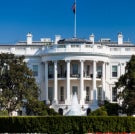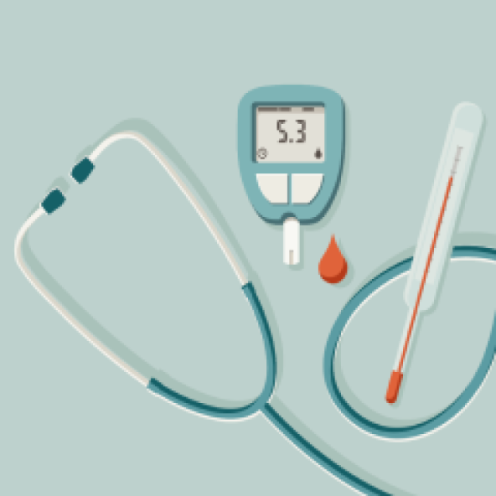A ceasefire between Israel and Hamas has officially begun ushering in an initial six-week period of calm after a devastating 15-month conflict.
A last-minute delay by Hamas put off the start of the truce by nearly three hours and highlighted its fragility.
Israeli airstrikes, artillery and tank attacks continued in northern Gaza after the initial deadline of 8.30am local time, killing at least 13 Palestinians and wounding dozens more before the ceasefire actually took effect at 11.15am. Israel’s military said it had carried out air and artillery strikes against “terror targets”.
Israel blamed Hamas for the delay after the Palestinian militant group failed to provide a list naming the first three hostages it would release later on Sunday as part of the agreement.
The conflict started after Hamas killed around 1,200 people in a terror attack on southern Israel on 7 October 2023, and abducted another 250.
Around 94 Israelis are still being held captive inside the Gaza Strip, and the military believes at least a third of these are dead.
In response, Israel launched a devastating bombing and ground campaign in Gaza, killing more than 46,000 Palestinians, according to Gaza’s health ministry.
Here is everything we know about the deal:
First phase
A six-week initial ceasefire phase includes the gradual withdrawal of Israeli forces from central Gaza and the return of displaced Palestinians to northern Gaza.
Hamas will release 33 Israeli hostages, including all women (soldiers and civilians), children, and men over 50. Hamas will release female hostages and under 19s first, followed by men over 50.
The first three hostages released from Gaza arrived in Israel on Sunday for tearful reunions with families.
Footage showed 28-year-old Emily Damari, 24-year-old Romi Gonen and 31-year-old Doron Steinbrecher in a tense handover to the Red Cross on a Gaza City street.
Israel will release 30 Palestinian detainees for every civilian hostage and 50 Palestinian detainees for every Israeli female soldier Hamas releases. The total number of Palestinians released will depend on hostages released, and could be between 990 and 1,650 Palestinian detainees including men, women and children.
Israel’s Justice Ministry published a list of 737 Palestinian prisoners who are to be released under the ceasefire deal just hours after its Cabinet approved the agreement. The list includes members of the Hamas and Islamic Jihad militant groups, some of whom are serving lifetime sentences and are convicted of serious offenses such as murder.
However, it did not appear to include Marwan Barghouti, the 64-year-old who is the highest-profile prisoner held by Israel and seen by many Palestinians as a prime candidate to become their president in the future. Hamas has demanded that Israel release him as part of any ceasefire agreement, a possibility Israeli officials have ruled out.
Israeli troops will also pull out of all populated areas of Gaza during the first stage, Biden said, while “the Palestinians [could] also return to their neighbourhoods in all the areas of Gaza”.
There would be security arrangements at the Philadelphi corridor bordering Egypt, along the southern edge of Gaza, with Israel withdrawing from parts of it after the first few days of the deal.
The Rafah crossing between Egypt and Gaza will start to work gradually, allowing the passage of those who are sick and humanitarian cases out of the enclave for treatment.
The agreement also stipulates that aid deliveries to Gaza should rise to 600 trucks daily, surpassing the minimum requirement of 500 trucks that aid agencies deem necessary to address the territory’s dire humanitarian crisis.
Second phase
Negotiations over a second phase of the agreement will begin by the 16th day of phase one and is expected to include the release of all remaining hostages, including Israeli male soldiers, a permanent ceasefire and the complete withdrawal of Israeli soldiers.
The second and most difficult phase will mark “a permanent end to the war,” president Biden said earlier this week.
It will include the release of all remaining living hostages, including male soldiers, and Israeli forces would withdraw completely from Gaza.
This would be done in return for Palestinians held in Israeli jails. Of the 1,000 Palestinian prisoners Israel is thought to have agreed to release overall, about 190 are serving sentences of 15 years or more.
The release of the remaining hostages in the second phase will be negotiated during the first. Hamas has said it will not release the remaining captives without a lasting ceasefire and a full Israeli withdrawal.
Third phase
The third and final stage would involve the reconstruction of Gaza – something which could take years – and the return of any remaining hostages’ bodies.
The deal requires 600 truckloads of humanitarian aid to be allowed into Gaza every day of the ceasefire, 50 of them carrying fuel, and 300 of the trucks allocated to the north of the strip.
Israel allows aid into the enclave but there have been disputes over the amount allowed in, as well as the amount that reaches people in need, with looting by criminal gangs an increasing problem.
Who will take control of Gaza?
Israel has said it will not end the war leaving Hamas in power. It has also rejected administration of Gaza by the Palestinian Authority, the Western-backed body set up under the Oslo interim peace accords.
The international community has said Gaza must be run by Palestinians, but efforts to find alternatives to the main factions among civil society or clan leaders have proved largely fruitless.
However, there have been discussions between Israel, the United Arab Emirates and the United States over a provisional administration that would run Gaza until a reformed Palestinian Authority is able to take charge.
Reuters contributed to this report
Source: independent.co.uk



